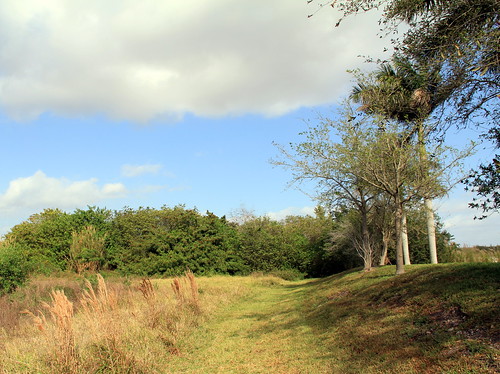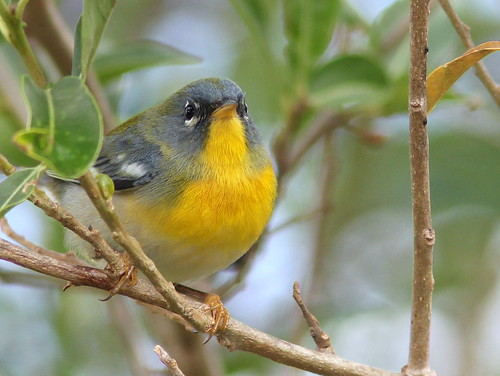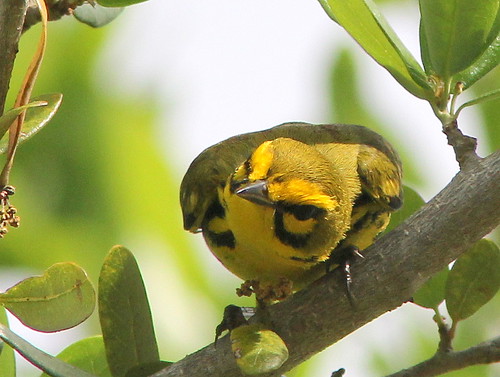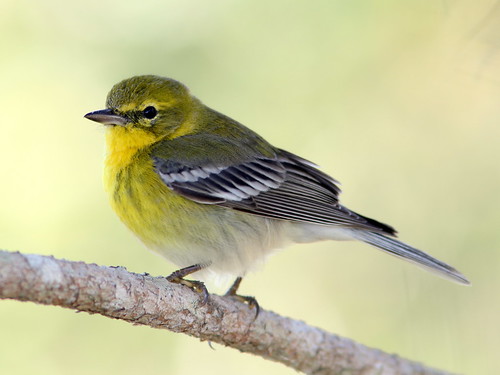Posted by: Ken @ 2:12 pm
Among my fondest birding memories are those of spring migration when I was a youngster in New Jersey. The trees were just leafing out, and numerous warblers in vivid plumage adorned the branches. The air was filled with song, and the show changed almost every day, beginning with the early arrivals, such as Myrtle (now called Yellow-rumped), Palm and Black and White Warblers, followed by a slew of other warblers, orioles, buntings, and grosbeaks.
Spring migration can be very slow in our south Florida neighborhood. We are experiencing the gradual departure of most of the small species that spend the winter here. Out-migrants greatly outnumber in-migrants. Gone are the kingfishers, the kestrels, and most of the Yellow-rumped, Prairie and Palm Warblers that were so common during the colder months. Within a few weeks the only bird in our yard that is smaller than a Blue Jay or shrike will be a Red-bellied Woodpecker or an occasional starling. We don’t have any sparrows– not even House Sparrows!
Loggerhead Shrikes are becoming more numerous:
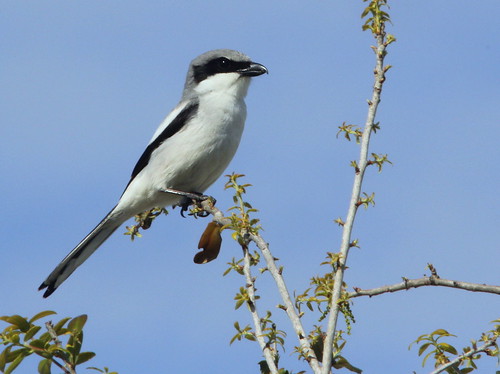
Male Red-winged Blackbirds are being joined by their mates as they relocate to territories in the wetlands:

We live about 18 miles inland from the ocean. Local habitat is badly degraded. Our housing development was gouged out of land that was originally Everglades. Much of it had been drained and put to agricultural use by the middle of the 20th Century.
The homes in our neighborhood were constructed only about 10 years ago, elevated above the flood level on rock and sand, excavated from quarries that became the lakes such as the one in our back yard. To mitigate the environmental damage, the developer had to set aside undeveloped tracts to serve as water conservation areas.
Each home has one mandatory native tree (ours is a Mahogany), but just about every other plant is an exotic. Groomed St. Augustine lawns extend to the very margins of each lake, and alien fruiting and flowering trees and shrubs predominate. The water conservation areas are overrun with invasive Australian Pines and Melaleucas, imported to draw water out of the wetlands, and Brazilian Pepper, an ornamental shrub run amok.
At the western edge of our subdivision, our birding “patch” has one small thicket of mostly exotic shrubs spared by the gardeners, providing shelter for transient migrants:
Prairie Warblers breed in south Florida, especially in coastal areas, and we welcome many additional migrants to our local birding patch. They had been getting scarce since early March, but this week a small flock of warblers moved through the row of Live Oaks that run along the top of the berm (to the right in the above photo).
The flock consisted mostly of Prairie Warblers, which keep their bright yellow plumage all year long:

Among the other warblers were several Northern Parulas, including this male:
Female Northern Parulas lack the black “necklace” of males, but are no less beautiful:
This Prairie Warbler, about to capture a spider, seemed to look curious about my presence, and struck an almost comical pose:
Palm Warblers are the most common small birds around suburban dooryards– some locals call them “Florida Sparrows:”
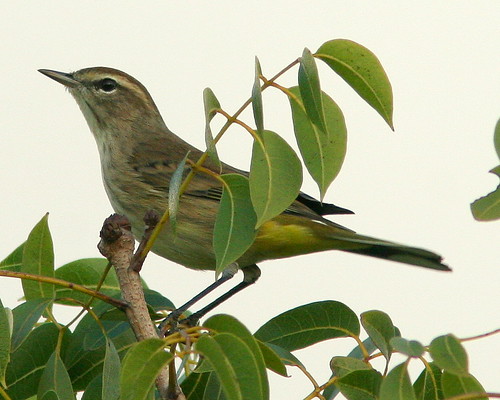
While most Palm Warblers we see here during winter are dull birds of the western population, sometimes a representative of the bright eastern race shows up during migration:
Yellow-rumped Warblers arrive in dull winter and immature plumage, but the males begin to brighten up before departing:
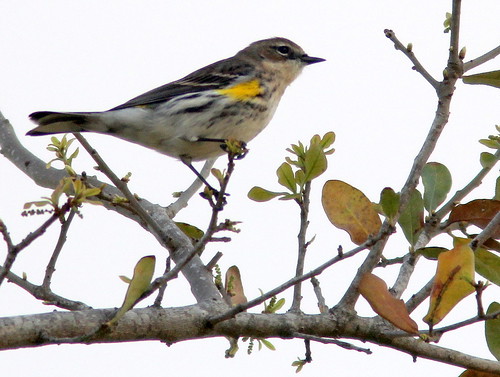
Pine Warblers may be found all year around in suitable pine and mixed forests, but during winter their numbers increase as they are joined by migrants. They may be found locally in ornamental Slash Pines and park land.
A cooperative Pine Warbler posed in a small pine along the boardwalk at nearby Chapel Trail Nature Preserve:
This past week, a five-foot alligator appeared on the undeveloped side of the lake bordering our subdivision. Unless it climbs back over the levee into the wetlands, it will not long for this world. If residents with back yards on the other side see it, they will call for its removal:
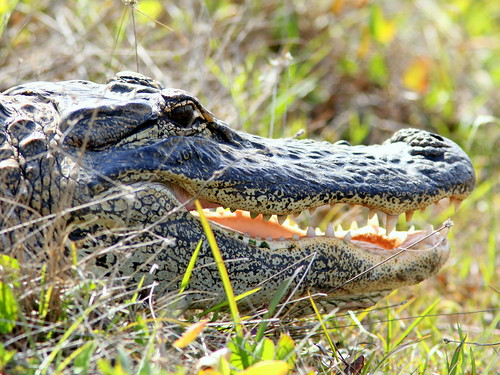
The lack of suitable habitat is not the only reason for our paucity of migrants. In Spring we do not see as many “through-migrants” as we do in the Fall, when southbound birds usually will avoid flying over water until nightfall. Therefore, they wait for favorable weather along the southern tip of the peninsula, and even may back up into our neighborhood. For updated reports and radar images of Florida migration, visit Badbirdz-Reloaded.
In the fall, incoming flocks often become “over-migrants.” The reason? The flight to here from Cuba and the Bahamas is rather short. Cuba is only 90 miles south of the tip of the Florida peninsula. In good flying weather, this is a mere 3 or 4 hour flight for migrating birds. Flocks congregate along Cuba’s north coast. Most depart north shortly after sunset, reaching Florida before midnight. They are able to fly many more miles, overland or along Florida’s coastlines, reaching the northern part of the state by dawn. Those that encounter headwinds or depart Cuba later during the night may stop on the Florida Keys or along the coast at daybreak.













